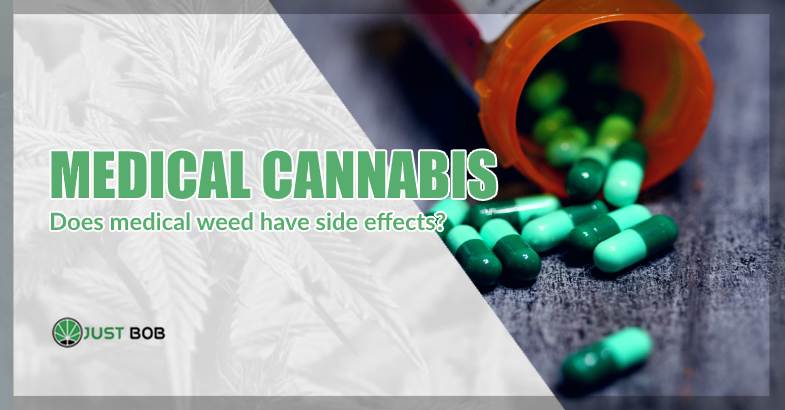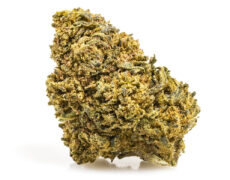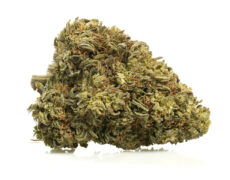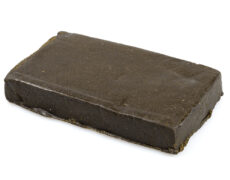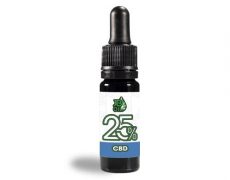Modified on: 19/03/2024
What Are the Side Effects of Medical Cannabis?
Among the most important questions for those who, perhaps like you, intend to use marijuana for medical purposes, there is one in particular that concerns the possible adverse effects of this product: what are the side effects of medical cannabis sativa or indica? We are not talking about CBD weed, legal hash or CBD oil consumption, but about marijuana-based medicines that you will find in many pharmacies here in Ireland.
These drugs are manufactured in galenic pharmacies using hemp flowers with high THC content (and often also with a high percentage of CBD).
It is probably why you are worried about the medical cannabis side effects. You can say goodbye to your doubts as today we will tell you everything you need to know about the negative symptoms caused by this product.
Let’s get started!
Medicinal Cannabis and Side Effects
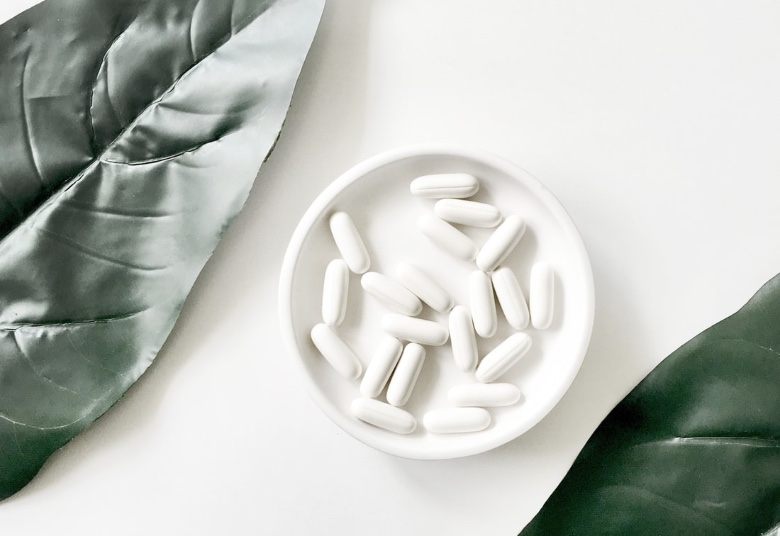

The negative consequences of making medical marijuana legal are different from those of conventional cannabis use.
Recreational use of THC-rich weed can cause mood and psychological changes (for example, anxiety and sometimes depression), as well as less severe effects such as cravings, dry mouth and eyes, and much more…
According to the Veronesi Foundation, the cannabis drugs use can cause the following side effects:
temporary and relatively mild tachycardia;
dry mouth;
conjunctival hyperemia, i.e. the typical red eyes;
sometimes insomnia, although cannabinoids generally help regulate sleep.
These side effects are described by Dr Vittorio Andrea Guardamagna, Director of the Palliative Care and Pain Treatment Unit of the European Institute of Oncology in Milan and member of the Ethics Committee of the Umberto Veronesi Foundation. Dr Guardamagna further stressed that these are short-term effects and that studies on the long-term side effects of medical cannabis are still rare. These statements were certainly made after a lot of medical research and countless clinical trials
That said, as you can see, they are certainly less severe than those associated with high THC marijuana.
But why are the medical cannabis effects less severe than those of recreational cannabis and hashish use?
Read also: “Chemical hunger”: why and how to manage it?
Major Interactions
When it comes to combining medicinal cannabis with other prescription medications, certain combinations can lead to worsened adverse effects.
For instance, patients with chronic pain or multiple sclerosis may experience heightened negative effects when using cannabis alongside certain pharmaceutical drugs. Similarly, those with chronic neuropathic pain or cancer pain may find that the interaction between medicinal cannabis and their prescribed medication exacerbates side effects.
Additionally, individuals using the cannabis plant alongside treatments for mental health conditions or spinal cord injuries may experience intensified adverse effects, impacting their overall well-being. Understanding potential drug abuse and interactions is crucial for healthcare providers when prescribing medicinal cannabis, as it ensures patient safety and optimizes treatment outcomes.
Therefore, it’s essential for patients to communicate openly with their healthcare providers about all medications they are taking, including medicinal one, to minimize the risk of adverse effects and maximize therapeutic cannabis benefits.
that being said, we suggest avoiding combining:
Warfarin (Coumadin) with CANNABIS: Using cannabis alongside warfarin may heighten its effects, potentially increasing the risk of bruising and bleeding.
Exercise caution with:
Sedative medications (Barbiturates) interacting with CANNABIS: Cannabis and sedative medications may lead to increased sleepiness and slowed breathing, posing a risk of breathing problems and excessive drowsiness.
Sedative medications (CNS depressants) interacting with CANNABIS: Combining cannabis with sedative medications may result in heightened sleepiness and slowed breathing, potentially causing breathing difficulties and excessive drowsiness.
Theophylline with CANNABIS: Cannabis may reduce the effectiveness of theophylline, although the significance of this interaction is uncertain.
Medications that slow blood clotting (Anticoagulant / Antiplatelet drugs) with CANNABIS: Cannabis may slow blood clotting, increasing the risk of bruising and bleeding when taken alongside medications with similar effects.
Medications metabolized by the liver (Cytochrome P450 2E1 (CYP2E1) substrates) with CANNABIS: Cannabis may affect the breakdown of certain medications by the liver, potentially altering their effects and side effects.
Medications metabolized by the liver (Cytochrome P450 3A4 (CYP3A4) substrates) with CANNABIS: Cannabis may influence the breakdown of certain medications by the liver, potentially modifying their effects and side effects.
Medications moved by pumps in cells (P-glycoprotein Substrates) with CANNABIS: Cannabis may affect the functioning of cellular pumps that regulate medication levels in the body, potentially altering the effects and side effects of these medications.
Anesthesia with CANNABIS: Using cannabis may increase the amount of anesthesia required for surgery. Inform your doctor if you regularly use cannabis and consider stopping its use at least two weeks before surgery.
Medications for dissolving blood clots (Thrombolytic drugs) with CANNABIS: Combining cannabis with medications for dissolving blood clots may increase the risk of bleeding and bruising due to cannabis’s potential to slow blood clotting.
Medications metabolized by the liver (Cytochrome P450 2C9 (CYP2C9) substrates) with CANNABIS: Cannabis may affect the breakdown of certain medications by the liver, potentially altering their effects and side effects.
Medications that increase or decrease the breakdown of other medications by the liver (Cytochrome P450 2C9 (CYP2C9) and 3A4 (CYP3A4) inducers/inhibitors) with CANNABIS: Cannabis is metabolized by the liver, and certain medications may alter its breakdown, affecting its effects and side effects.
Alcohol with CANNABIS: Combining cannabis with alcohol may amplify the effects of alcohol on the central nervous system, increasing the risk of side effects such as drowsiness and mood changes.
Exercise caution with:
Medications for mental conditions (Antipsychotic drugs) with CANNABIS: Combining cannabis with some antipsychotic medications may not affect their effectiveness. However, it’s essential to monitor for any changes in treatment response.
THC-Rich Marijuana vs Medical Marijuana: What Are the Differences?
Cannabis used for recreational purposes contains high percentages of THC (which, along with CBD, is essentially the cannabinoid that invites you to take marijuana). Medical cannabis also contains THC and CBD. These are the varieties of medical marijuana used in some European countries such as Italy to make galenic cannabinoids:
FM2, with THC 5-8% and CBD 7.5-12% (produced in Italy only in the military, a pharmaceutical chemical plant in Florence).
FM1, with THC 13-20% and CBD <1% (produced in Italy only at the Florence military, pharmaceutical chemistry plant)
Bedrocan, with THC 22% and CBD <1%.
Bediol, with THC 6% and CBD 8%.
Bedica, with THC 14% and CBD <1%.
Bedrobinol, with THC 12% and CBD <1%.
Bedrolite , with THC <0.4% and CBD 9%.
Pedanios, with THC 22% and CBD <1%.
Each and every of the, contain THC. And every product, except for Pedanios, has high percentages of it. So why are the side effects so different from recreational cannabis use?
The reason is simply the concentration of THC. In cannabinoid drugs, THC is poorly concentrated, although it is enough to treat certain conditions and symptoms such as muscle spasms, glaucoma, nausea, chronic neuropathic pain and much more.
Smoking cannabis through a joint, on the other hand, THC is highly concentrated, and the side effects of its use are more severe and intense than those of medical marijuana.
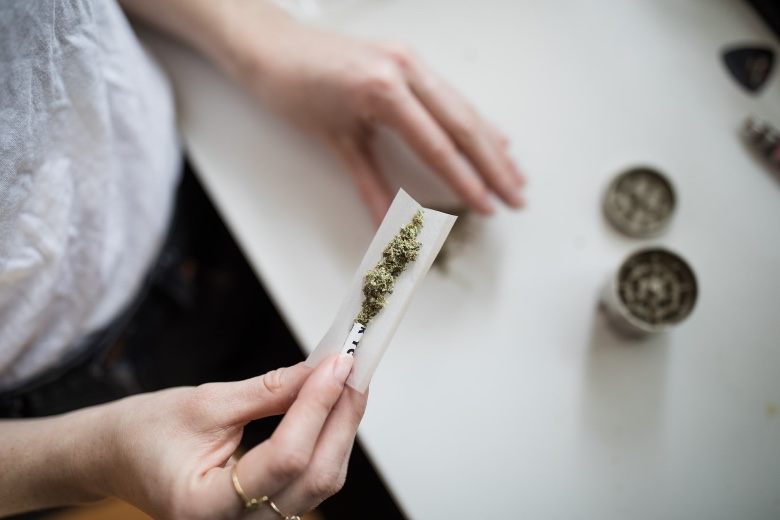

However, the side effects of cannabis drugs are very mild (and temporary), so if you are considering taking them, we recommend that you talk to your doctor, who will give you the right information about them.
Read also: Cannabis pipe: what are the reasons why everyone is talking about it?
Who Can Use Cannabis Medications and How Can You Get Them?
In Ireland, the use of medicinal cannabis and CBD Flowers is regulated under strict guidelines and is limited to patients with specific medical conditions. Medical marijuana, derived from the cannabis sativa plant, is legal for patients suffering from conditions such as chronic pain, chemotherapy-induced nausea, multiple sclerosis, and neuropathic pain.
However, accessing medicinal cannabis in Ireland requires a prescription from a registered medical practitioner authorized to prescribe such treatments. The legislation surrounding medical cannabis in Ireland involves rigorous criteria, with patients needing to have exhausted all other treatment options before being considered for cannabis-based medicines.
Additionally, prescribing doctors must obtain approval from the Minister for Health before issuing a prescription for medicinal cannabis. The situation regarding medical cannabis in Ireland is continually evolving, with ongoing research and clinical trials exploring its efficacy and safety for various medical conditions.
While medical cannabis can offer pain relief and alleviate symptoms for some patients, it’s crucial to consider potential side effects, including dizziness, drowsiness, and impaired coordination. Patients who qualify for medical cannabis treatment in Ireland can obtain their medications from licensed pharmacies that stock approved cannabis products.
Overall, the legislation and regulations surrounding medical cannabis aim to ensure safe and appropriate use for patients in need while preventing misuse and abuse of these medications.
As for the cannabis-based drugs supported by the National Health System, and therefore free of charge, the guidelines of the Ministry of Health indicate the following illnesses:
Multiple sclerosis and spinal cord injuries resistant to conventional therapies to relieve pain related to muscle spasms.
Chronic pain in cases where treatment with non-steroidal anti-inflammatory drugs, cortisone or opioids has proven ineffective.
Nausea and vomiting are untreatable with traditional methods caused by radiation, chemotherapy and HIV therapies.
Cachexia and anorexia in cancer patients, in people with AIDS and in people with anorexia nervosa to obtain appetite stimulation that cannot be induced by standard treatments
Glaucoma resistant to conventional therapies.
Tourette’s syndrome to reduce involuntary movements that cannot be alleviated with traditional therapies.
All diseases must be resistant to traditional therapies for patients to benefit from the drugs free of charge. Still, in reality, the disorders for which medical cannabis can be used may vary from one region to another (so they do not necessarily have to be all those included in this list).
We recommend that you speak to your GP, who will tell you whether your condition, if any, is one of those listed by your region, and therefore whether the NHS would cover cannabis-based medicines. Depending on specific parameters, your GP will decide on the variety of cannabis to be prescribed, the form (e.g. decoction papers, capsules, extracts, etc.) and the dosage.
Then, you have to go to the pharmacy and order or buy the right drug.
Medical Cannabis and Chronic Pain
When considering the use of medical cannabis, it’s essential to be aware of potential side effects that may arise.
While medical marijuana has shown promising results in managing various medical conditions such as chronic pain, chemotherapy-induced nausea, and multiple sclerosis, it’s crucial to note that individuals may experience adverse effects.
Some common side effects of medical cannabis include dizziness, drowsiness, and impaired coordination, which can affect activities such as driving or operating heavy machinery.
Additionally, smoked cannabis may pose risks to lung health, similar to smoking tobacco. Long-term use of medical cannabis may also lead to cannabis use disorder or substance abuse, particularly among young adults or those with a history of substance abuse.
Furthermore, there is evidence suggesting a potential link between cannabis use and psychotic disorders, although further research is needed to fully understand this association.
It’s important for healthcare providers and patients to carefully consider the potential risks and benefits of medical cannabis treatment and to closely monitor any adverse effects that may arise.
Conclusions
In conclusion, while medical cannabis offers promising relief for various conditions such as multiple sclerosis and neuropathic pain, it’s essential to acknowledge its potential side effects. These can range from minor discomforts like drowsiness and dry mouth to more severe concerns like increased heart rate and psychotic episodes, particularly in predisposed individuals.
Moreover, the use of medical marijuana should be approached with caution, especially in young adults and those with a history of drug abuse or psychiatric disorders. As more research emerges and medical cannabis becomes increasingly legalized and accessible, it’s imperative for patients and healthcare providers alike to remain informed about its potential benefits and risks.
By prioritizing patient safety and conducting further clinical trials, we can better understand the nuanced effects of medical cannabis and optimize its therapeutic potential while minimizing adverse outcomes.
However, if you’re interested in the world of light cannabis, we invite you to visit our website, as well as our online shop, Justbob. You will be amazed by the wide choice of varieties and formats!
We are waiting for you!

